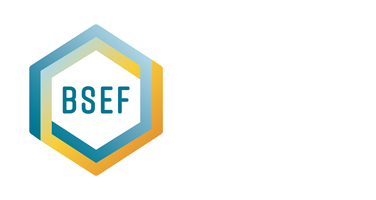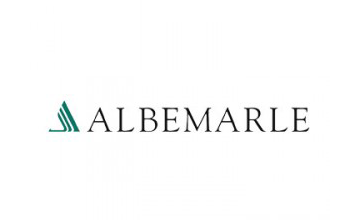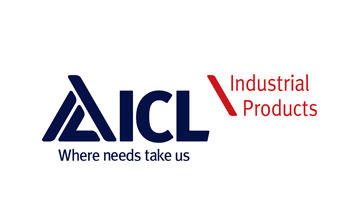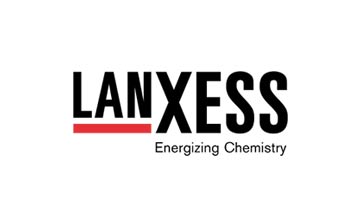

VECAP code of best practice
Many materials – particularly plastics – benefit from the inclusion of speciality chemicals during manufacture. Known collectively as ‘polymer additives’ these can help the plastic achieve the desired physical and chemical properties needed for the end use.
Polymer additives are widely used in plastics that are likely to undergo extended long-term use, for example in cars, televisions or furniture. Using flame retardants additives increases the fire resistance properties of plastics, an important safety aid in applications such as electronics, automotive components and insulation. Other additives can, for example, improve resistance to ultraviolet light, which can discolour and even degrade many plastics. However, the additives that make these qualities possible need to be handled with care to avoid them finding their way into the environment.
In 2004, BSEF – the International Bromine industry initiated a successful product stewardship programme involving its member companies and their downstream value chain. This initiative – the Voluntary Emissions Control Action Programme (VECAP) focused on the responsible management of flame-retardant chemicals by downstream users where they apply or incorporate such additives into a range of materials and products including textiles and polymers.
The original VECAP programme has had a remarkable impact on the responsible management of brominated flame retardants within the value chain. It has helped users to understand how to manage these additives appropriately and responsibly by reducing environmental emissions from their operations.
This updated Code of Best Practice is designed to update and refresh the key best practices for the handling and management of brominated flame retardant additives by downstream users, in particular compounders and master batchers so as to minimise releases to the environment and exposure of workers. The use and application of the revised Code will be actively encouraged by BSEF via key downstream use sectors associations and other value chain actors such as specifiers (e.g. retailers) and OEMs.
THE VECAP CODE OF GOOD PRACTICE 
VECAP is based on a Code of Best Practice to help producers and downstream users – particularly compounders, textile formulators and masterbatchers1 within the plastics converters sector – control, reduce and continuously improve their potential emissions of flame retardants. Adherence to the code is recognised as best practice in preparing Chemical Safety Assessments (CSAs); so much so that the European Chemicals Agency has included the additional use map for the plastics converters sector – EuPC – in its library2 . This specifically encourages potential registrants to implement the guidance given by the VECAP code.
This Code has now been updated and is being made available widely to industries and users of brominated flame retardants to ensure that unintended emissions of brominated flame retardants are minimised, thereby enhancing environmental protection.
As the name implies, VECAP is voluntary. However, those companies adopting the VECAP principles are showing their commitment and responsibility in minimising the risk of emissions and in continuously improving their environmental performance.
Since its establishment in 2004, VECAP in Europe has encouraged more than 300 total downstream users’ production sites to adopt the practices set out in the code. It has also been disseminated and applied in other jurisdictions including Japan, Mexico, China, South Korea and Taiwan.
A CODE FOR MANUFACTURERS, DISTRIBUTORS AND PROCESSORS OF POLYMER ADDITIVES
VECAP is part of the commitment of BSEF and its member companies to the highest standards of product stewardship3. This guide will assist and advise polymer additive users on the best way to handle and process flame retardant additives with a view to minimising any environmental releases.
This guide provides information on the Best Available Techniques and Best Practices for emptying bags and handling waste with polymer additives. This is in addition to any existing regional and global legal requirements for the handling and use of brominated flame retardant additives, including specific provisions set out in particular substance safety data sheets (SDSs).
POTENTIAL SOURCES OF POLYMER ADDITIVE EMISSIONS
Polymer additives can be unintentionally released to the air, water and land if effective steps are not taken to identify and minimise the likelihood of such emissions. This section highlights the major emission source categories and the potential sources.
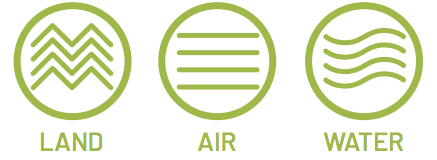
LAND EMISSIONS
Operational uses of polymer additives may result in land emissions. The following are particular sources of emissions:
- Product residues in empty packaging
- Spills and floor sweepings
- Contaminated/off-specification products
- Test specimens/quality control samples
- Dust filter residues
- Sludge from waste water treatment (WWT)
- Selling discharged big bags or intermediate bulk containers (IBCs) without knowing what treatment the end user has used to remove any residual products.
- Cleaning packaging; for example, during preparation for reuse or recycling.
Land emissions from residual products in empty packaging represent the largest component of overall potential emissions.
AIR EMISSIONS
When handling powdered materials, such as in packaging lines or in systems for loading reactor vessels, it is essential to use a local exhaust ventilation system whenever possible when emptying polymer additives packaging; this will minimise dust emissions. Equipping ventilation systems with adequate filters can reduce air emissions by up to 99 percent. In addition, closing any windows or doors located near ventilation systems will help avoid interference with the exhaust system. Avoiding outdoor storage of empty packaging in open containers will also reduce risk.
WATER EMISSIONS
Water-based dispersions of polymer additives requires special measures in their processes to prevent environmental releases. Any water used during processing and cleaning should be kept completely separate from rainwater to avoid it entering water streams untreated. Washing re-usable protective clothing in cleaning facilities outside the plant where BFRs are handled should be avoided.
OTHER EMISSIONS – REDUCTION OPPORTUNITIES
Non-reusable samples/off-specification material should be collected, stored if possible, then disposed of as chemical waste once testing has been completed.
“Polymer additives, and their waste packaging, should be stored in a designated closed, weatherproof building”
GENERAL PRINCIPLES FOR HANDLING POLYMER ADDITIVES
During manufacturing, multiple transfers or blending operations may occur before final processing. When processed, base resins encapsulate the polymer additive or, in some cases, react with the additive to form the desired plastic.
However, powdered polymer additives can stick to packaging and processing equipment. This creates a risk of airborne dust during transfer processes. Similarly, water-based production processes pose a high risk of waterborne emissions.
These potential risks underline why it is essential to have effective preventative measures in place for identifying and minimising any potential emissions.
SAFETY DATA SHEETS
Polymer additive producers are legally required to keep their Safety Data Sheets (SDSs) for brominated flame retardant additives they place on the market up-to-date. They are also required to inform customers of any updates. SDSs can be requested via the producers’ websites or downloaded from:
GOOD HOUSEKEEPING
Formal cleaning procedures and effective industrial hygiene should be part of any manufacturing sites operating procedures. The procedures put in place should reflect any requirements set out in additive safety data sheets to minimise worker exposure and potential release to the environment. These procedures should be monitored and controlled to maintain the highest standards. Employees should be trained to clean work areas frequently, regularly and thoroughly.

Key recommended actions:
- All employees should have access to guidelines for good housekeeping and have regular training scheduled.
- Polymer additive packaging should be clearly marked as such and kept in designated closed containers, ideally in a separate designated closed container. This should also apply to residue from spills, unusable samples, off-spec material and any dust collected.
- Employees handling polymer additives should wear appropriate protective clothing. They should also know how to dispose of contaminated clothes appropriately.
- Spent packaging with polymer additive residues should be reused where practicable. If not, the packaging should be disposed of in the same way as polymer additives’ waste, i.e. sent to an approved chemical waste incinerator.
BEST PRACTICE:
This guide also provides more detailed information on important potential sources of emissions and the current best practices in:
1. Storage
2. Opening and Emptying Bags and Bulk Containers;
3 Ventilation
4. Operational Process Efficiency to Reduce Waste and Emissions.
1. STORAGE
There is a risk of polymer additive emissions during all stages of the production process, from their storage once delivered until their final use and waste treatment. Applying best practice can minimise these risks.
STORAGE – BEST PRACTICE
Polymer additives in solid form – usually as powder or low dust granules – are transported in bags or bulk containers to a storage area in the factory.
- Take care to avoid ruptures or tears in the bags or containers that could lead to emissions.
- Containers should be checked carefully both on arrival and departure to ensure that they are undamaged and intact.
- Any tears should be repaired immediately, and any spills cleaned up.
- Polymer additives, and their waste packaging, should be stored in a designated closed, weatherproof building.
- In places where powdered materials are handled, such as packaging lines or systems for loading reactor vessels, using a local exhaust ventilation system when emptying polymer additives packaging minimises dust emissions and is therefore highly recommended.

2. OPENING AND EMPTYING BAGS AND BULK CONTAINERS
Pay particular attention to dealing with waste packaging. Residues from polymer additive packaging present a potential source of environmental emissions. Always close doors and windows before opening any packaging.
Different types of packaging influence the potential amount of residue. Adopting best practice techniques when emptying can minimise the risk of them reaching the environment.
EMPLOYEES
Employees working with packaging should always:
- Wear proper Personal Protective Equipment (PPE) as specified in the SDS
– Respirator
– Gloves
– Protective clothing - Ensure there is a standing procedure in place to immediately clean the relevant working area after completion of each batch of manufacturing.
- Ensure there is a standing procedure for disposing of used protective clothing.
PACKAGING TYPES
There are three main packaging forms for polymer additives
01 ‘SMALL’ BAGS
usually 20-25 kg

02 ‘BIG’ BAGS
usually 500-1000 kg
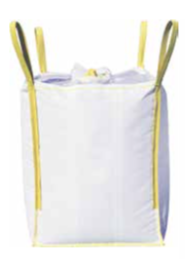
03 INTERMEDIATE BULK CONTAINERS
(IBCs) and drums
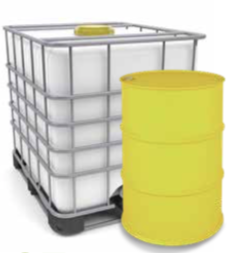
1.0
BEST PRACTICE FOR EMPTYING
20-25 KG BAGS
 1. Start the ventilation system. Place the bag under the hood, on top of the funnel or other opening, for filling.
1. Start the ventilation system. Place the bag under the hood, on top of the funnel or other opening, for filling.
 2. Position the bag so that the fill spout faces the operator. Cut the opening in the bag on the opposite side of the fill spout.
2. Position the bag so that the fill spout faces the operator. Cut the opening in the bag on the opposite side of the fill spout.
 3. Tip the bag to expose the cut side to the fill spout and empty the bag.
3. Tip the bag to expose the cut side to the fill spout and empty the bag.
 4. Shake the empty bag vigorously.
4. Shake the empty bag vigorously.
 5. Roll up the empty bag to remove all the air.
5. Roll up the empty bag to remove all the air.
 6. Place rolled-up bag in a plastic bag, ready for disposal.
6. Place rolled-up bag in a plastic bag, ready for disposal.
 7. Close the plastic bag of empty paper/plastic bags when full and place in a shipping container for proper disposal.
7. Close the plastic bag of empty paper/plastic bags when full and place in a shipping container for proper disposal.
“By implementing VECAP best practices you can reduce residues in packaging by up to 95%”
2.0
BEST PRACTICE FOR EMPTYING
500-1000 KG BAGS
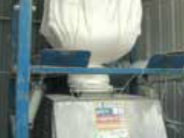 1. Check if ventilation system is engaged. Mount the bag above the hopper.
1. Check if ventilation system is engaged. Mount the bag above the hopper.
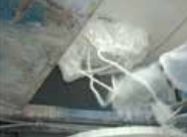 2. Release bottom closures.
2. Release bottom closures.
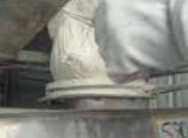 3. Secure the sack to the hopper to prevent any spillage; product should discharge by gravity.
3. Secure the sack to the hopper to prevent any spillage; product should discharge by gravity.
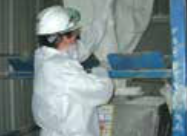 4. Once emptied, shake all four corners of bag vigorously to release any remaining material.
4. Once emptied, shake all four corners of bag vigorously to release any remaining material.
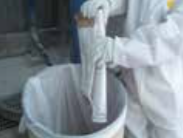 5. Carefully fold the empty packaging ready for disposal.
5. Carefully fold the empty packaging ready for disposal.
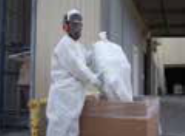 6. Pack it into a polyethylene plastic bag, close it and place it in a shipping container for proper disposal.
6. Pack it into a polyethylene plastic bag, close it and place it in a shipping container for proper disposal.
“By implementing VECAP best practices you can reduce residues in packaging by up to 95%”
3.0
BEST PRACTICE FOR EMPTYING
IBCS AND DRUMS
 1. If the material is very viscous, heat the IBC to help the material flow from the container easily.
1. If the material is very viscous, heat the IBC to help the material flow from the container easily.
 2. Once emptied, tilt the IBC, either manually or mechanically (see image) to increase flow to the outlet tap area.
2. Once emptied, tilt the IBC, either manually or mechanically (see image) to increase flow to the outlet tap area.
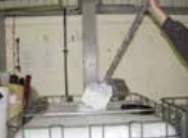 3. Use a shovel to scrape the remaining material from the sides; note that where the material is highly viscous it may cling to the sides of the IBC, or
3. Use a shovel to scrape the remaining material from the sides; note that where the material is highly viscous it may cling to the sides of the IBC, or
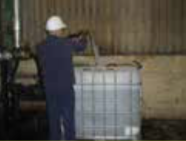 4. Use a vacuum pump via the dip pipe while carefully tilting the IBC or drum to collect material in one area to remove any remaining product.
4. Use a vacuum pump via the dip pipe while carefully tilting the IBC or drum to collect material in one area to remove any remaining product.
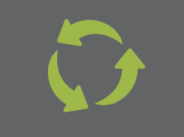 5. Following cleaning, send the remaining sludge for appropriate end of life treatment by reuse, recycling, incineration or in controlled landfill, depending on local requirements.
5. Following cleaning, send the remaining sludge for appropriate end of life treatment by reuse, recycling, incineration or in controlled landfill, depending on local requirements.
3. VENTILATION
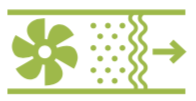
To reduce dust emissions to air, an exhaust ventilation system equipped with well-operated fabric filters should be the minimum standard deployed. In addition, sucking the air stream into the mixer further reduces dust emissions including from doors and workers’ clothing.
• Activate the ventilation system before beginning to unload the bags.
• Place the polymer additives bags in front of the loading point.
CHOOSING VENTILATION EQUIPMENT
Almost any air filtration system is better than none. However, using the best available ventilation equipment can substantially reduce any emissions. A tiered system, with an array of different filters can achieve emissions lower than 0.03 mg/Nm3. The first filter is a standard bag filter (to catch bulk dust), which will reduce the remaining dust emission to less than 5 mg/Nm3. The second filter is a sintered lamella filter, further reducing dust emission back to below 1 mg/Nm3. The final filter, an ‘absolute’ filter, brings the emissions to below to below 0.03 mg/Nm3. These final two steps are required where the objective is ‘zero emission’”.
In addition, there needs to be a control system for ensuring that the filters are cleaned, shaken or replaced at the correct intervals. Given the small particle size, some dust formation is inevitable, even with a good air extraction system. Ideally, dust that spilled on the floor and equipment should be collected by using a proper vacuum cleaner (i.e. a cleaner equipped with filters that collect small particles, or a cleaner connected to the air aspiration system) or a broom. Avoid cleaning with water to prevent emissions from run-off, unless the water used is collected.
The air aspiration system should only be engaged during emptying/unloading of bags. It should be switched off immediately afterwards to avoid a continuous emission of dust via the bag filters (the so-called ‘tailing’ effect).
Where local exhaust ventilation is used, the air should be cleaned using an appropriately-designed filter system – such as a bag house or dust collector – before it is re-discharged into the environment. Where the system is designed to re-circulate exhaust air into occupied areas, all safety systems and back-up devices must be properly and regularly maintained to prevent accidental recirculation of contaminated air.
- Filters should be maintained and cleaned according to the manufacturer’s guidelines
- Filter dust should be processed in a manner that ensures it is full recycled within the plant or disposed of appropriately.
- Spent filters should be disposed of in the same way as the dust collected in the filters.
4. OPERATIONAL PROCESS EFFICIENCY TO REDUCE WASTE AND EMISSIONS
OPERATIONAL PROCESS EFFICIENCY TO REDUCE WASTE AND EMISSIONS
Organisations that use polymer additives should track operational efficiency, with emissions and waste production (and rates) acting as key performance indicators. Not only will this help prevent emissions, it will improve overall efficiency of operations, as emissions and waste create hidden costs.
Efforts to reduce plant or facility emissions begin with a clear understanding of all production processes and then looking for areas of improvement. Estimated, measured and recorded data may help identify opportunities
to optimise processes, thus reducing waste and excess emissions and delivering higher production for the same or even lower costs. However,
it is important to continuously measure and collect data and to regularly reviewing existing assumptions, calculations and estimates. This can help reveal additional opportunities to optimise processes and product flows and thus further reduce waste and emissions.
PACKAGING WASTE MANAGEMENT
Any packaging waste containing polymer additive residues – unless these are to be re-used internally – should be disposed in the same way as polymer additive waste, i.e. sent to a chemically-secure landfill4 or to an approved chemical waste incinerator. Which method applies will depend on the relevant national or regional protocol. The authorised waste company responsible for disposal should also provide written confirmation of the method of disposal.
Potential emissions arising from cleaning re-usable/sellable packaging can be avoided by providing potential buyers with clear instructions. Otherwise washing/ cleaning could lead to untreated water streams entering the environment.
PROCESS WASTE WATER- MANAGEMENT
Users of water-based polymer additive dispersions need to take special measures in their processes to prevent environmental releases.
Any water used during processing and cleaning should be kept completely separate from rainwater (to prevent dilution) and be treated in an appropriate waste water treatment (WWT) plant, either internally or externally.
Compounders and master-batchers that use a vacuum system with a
liquid ring pump at the extruder should also treat the resulting waste water appropriately. Installing a filter in a closed water loop, which is capable of removing up to 99 percent of the polymer additives, is strongly recommended.
Sludge resulting from WWT should be disposed of as chemical waste, in accordance with the recommended practices outlined above.
OTHER EMISSIONS REDUCTION OPPORTUNITIES
Samples for quality control and on-site analysis, as well as off-specification material, should be collected, stored if possible, then disposed of as chemical waste once testing has been completed, i.e. sent to a chemically- secure landfill or to an approved chemical waste incinerator. Which method applies will depend on the relevant national or regional protocol.
OVERVIEW OF BEST PRACTICES
ESSENTIAL

Dispose of empty packaging either by sending to an approved chemical waste incinerator or in chemically-secure landfill.
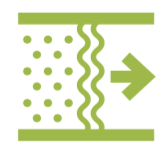
Use an air aspiration system equipped with well- operated fabric filters to prevent atmospheric polymer additive emissions when emptying bags or drums. Make sure the filter system is properly maintained and that filter dust and spent filters are properly disposed of, i.e. by sending to an approved chemical waste incinerator or in chemically-secure landfill.

Treat water streams discharged from plants to remove any polymer additive before being discharged into rainwater drainage or sewers. Dispose of any resulting sludge either by incineration or in chemically-secure landfill.
IMPORTANT
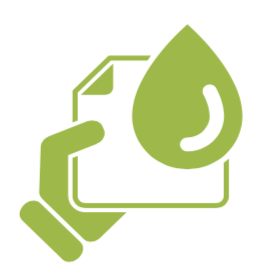
Clean up any polymer additives spills immediately and store the waste in the designated chemical waste container.
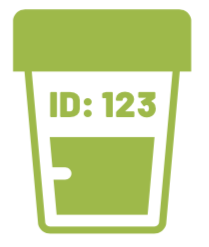
Collect all quality control samples and either re- use in the process or store them in a designated, clearly-labelled container.
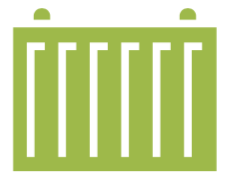
Store all polymer additive waste (empty packaging, filter dust, filters, spills, etc) in closed containers.
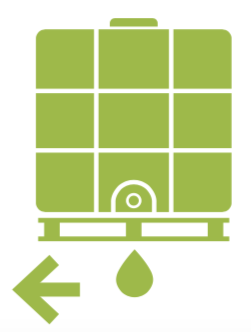
Divert any contaminated water (e.g. floor/ equipment washings, cooling water, etc) to a proper waste water treatment facility. Do not release directly to rainwater drainage, sewage, where it will not be treated.

Dispose of any used personal protection equipment as chemical waste.
